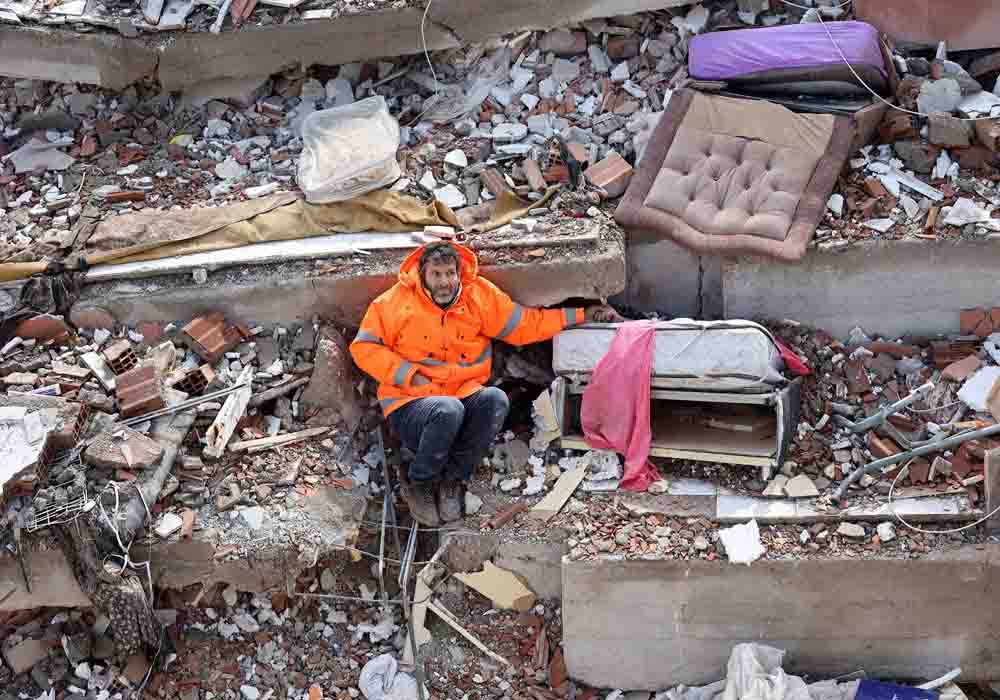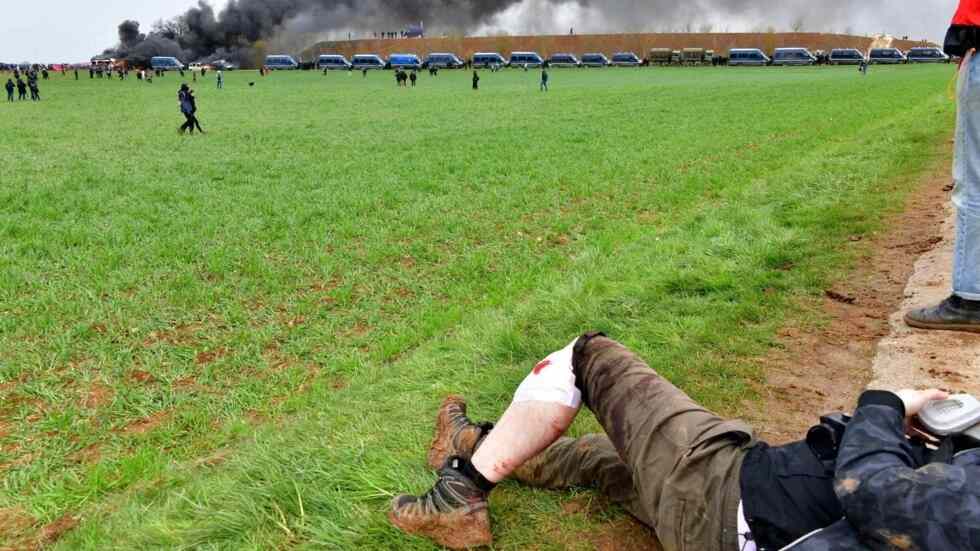More than 4,300 people have died and rescuers are racing to pull survivors from beneath the rubble after a devastating earthquake ripped through Turkey and Syria, leaving destruction and debris on each side of the border.
One of the strongest earthquakes to hit the region in a century shook residents from their beds at around 4 a.m. on Monday, sending tremors as far away as Lebanon and Israel.
In Turkey, at least 2,921 people were killed and more than 15,800 others injured, according to Turkey’s head of disaster services, Yunus Sezer.
In neighboring Syria, at least 1,451 people have died. According to the Syrian state news agency SANA, 711 people have died across government-controlled areas, mostly in the regions of Aleppo, Hama, Latakia, and Tartus.
The “White Helmets” group, officially known as the Syria Civil Defense, reported 740 deaths in opposition-controlled areas. Much of northwestern Syria, which borders Turkey, is controlled by anti-government forces amid a bloody civil war that began in 2011.
The epicenter of the 7.8-magnitude quake was 23 kilometers (14.2 miles) east of Nurdagi, in Turkey’s Gaziantep province, at a depth of 24.1 kilometers (14.9 miles), the United States Geological Survey (USGS) said.
Video from the scene in Turkey showed day breaking over rows of collapsed buildings, some with apartments exposed to the elements as people huddled in the freezing cold beside them, waiting for help.
Monday’s quake is believed to be the strongest to hit Turkey since 1939, when an earthquake of the same magnitude killed 30,000 people, according to the USGS. Earthquakes of this magnitude are rare, with fewer than five occurring each year on average, anywhere in the world. Seven quakes with magnitude 7.0 or greater have struck Turkey in the past 25 years – but Monday’s is the most powerful.
“We cannot use the buildings anymore. Maybe for hours. Maybe until tomorrow. I don’t know,” Dr. Mazen Kewara, Turkey director of the Syrian American Medical Society (SAMS), told CNN from near the earthquake’s epicenter in Gaziantep, where he and his family were taking shelter in their car.
“Next to my building, about 200-300 meters, there’s a collapsed building. There are many buildings that have collapsed in Gaziantep,” said Kewara.
“We have four of our hospitals damaged severely by the earthquake. We have evacuated two of them,” said Kewara, who is originally from Damascus, Syria.
‘It felt like it would never be over’
Eyad Kourdi, a CNN producer in Gaziantep, who was staying with his parents when the earthquake struck early Monday, said “it felt like it would never be over.”
When the shaking stopped, Kourdi and his parents walked out of their home still wearing their pajamas, he said.
With several inches of snow on the ground, they waited outside in the rain for about 30 minutes before he could go back inside to grab coats and boots.
Strong aftershocks have been felt in southern and central Turkey. About 11 minutes after the main quake hit, an aftershock of 6.7 magnitude hit about 32 kilometers (20 miles) northwest of the main quake’s epicenter. Another intense aftershock with a magnitude of 5.6 then occurred 19 minutes after the main quake.
“I actually don’t believe I made it out,” Kourdi said, adding that when it began, his parents screamed and that he did his best to calm them down – assuring them it would be over soon.
Kourdi said there were up to eight “very strong” aftershocks in under a minute after the 7.8 magnitude quake struck, causing belongings in his home to fall to the ground. Many of his neighbors had left their homes following the quake, he said.
He also visited Pazarcik, a neighboring town, and said that the situation there “were even more catastrophic.”
A winter storm in the region is exacerbating the disaster, according to CNN meteorologists.
“Hundreds of thousands of people are impacted by this. It is cold. It is rainy. Roads could be impacted, that means your food, your livelihood, the care for your children, the care for your family,” CNN meteorologist Karen Maginnis said.
“Anything as far as crops or anything growing across this region will be impacted as well. The ramifications of this are broad and will impact this region for weeks, and months.”
Meanwhile, the situation in Syria appears to be dire. More than 4 million people rely on humanitarian assistance in the region of northwest Syria where the deadly earthquake struck, according to the UN Office for the Coordination of Humanitarian Affairs (OCHA).
The majority of these people are women and children. Along with the devastation from the earthquake, Syrian communities are battling an ongoing cholera outbreak amid a harsh winter with heavy rain and snow over the weekend, OCHA said in its statement.
One of the eyewitnesses who has lived in Idlib for the past three years, Dr. Mostafa Edo, a Country Director for the U.S.-based NGO MedGlobal, said: “One of my colleagues, who I’ve worked with for more than five years, was killed about two years ago in Russian airstrikes. I found out today that his whole family, his wife and kids, all passed away today when their building collapsed.”
Another eyewitness, Khalil Ashawi, who is a photojournalist based in Jindayris in Syria’s northwest, says that in his ten years of covering war in Syria, he hasn’t witnessed scenes as “disastrous” as the ones he did on Monday.
“Paramedics and fire fighters are trying to help but unfortunately there is too much for them to deal with. They can’t handle it all.”
The quake damaged several archeological sites in Syria, according to Syria’s Directorate-General for Antiquities and Museums (DGAM), including Imam Ismail Mosque and the Shmemis Castle in the Hama Governorate, and the 13th century Aleppo Citadel.
Syria’s ancient city of Aleppo in the country’s northwest was seriously damaged in the ongoing civil war. DGAM says that artifacts inside the National Museum in Aleppo were also damaged in Monday’s earthquake.
Nearly 1,000 search and rescue volunteers have been deployed from Turkey’s largest city, Istanbul, along with dogs, trucks and aid, according to its governor, Ali Yerlikaya.
The World Health Organization has activated its network of emergency medical teams in the two countries to assist those affected by the earthquake, the organization’s director-general tweeted. Erdogan also said in his televised address that NATO, the European Union and dozens of other countries had offered to help.
The governor of Gaziantep, Davut Gul, said on Twitter that “the earthquake was felt strongly in our city,” and advised the public to wait outside their homes and stay calm.
“Please let’s wait outside without panic. Let’s not use our cars. Let’s not crowd the main roads. Let’s not keep the phones busy,” he said.
Gaziantep province has a number of small- and medium-sized cities, with a sizable refugee population, according to Brookings Institute fellow Asli Aydintasbas.
Video from the city of Diyarbakir, to the northeast of Gaziantep, shows rescue workers frantically trying to pull survivors out of the rubble.
Erdogan said the quake was felt in many parts of the country.
“I convey my best wishes to all our citizens who were affected by the earthquake that occurred in Kahramanmaraş and was felt in many parts of our country. All our relevant units are on alert under the coordination of AFAD,” Erdogan wrote on Twitter.
Messages of condolences and support started pouring in Monday morning as world leaders woke to the news of the deadly earthquake.
White House National Security Adviser Jake Sullivan said the United States was “profoundly concerned” about the destruction in Syria and Turkey.
“I have been in touch with Turkish officials to relay that we stand ready to provide any & all needed assistance. We will continue to closely monitor the situation in coordination with Turkiye,” Sullivan wrote on Twitter.



